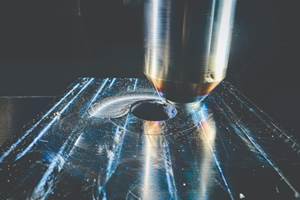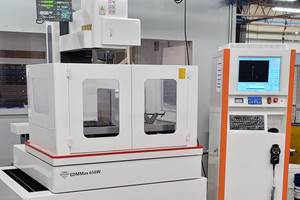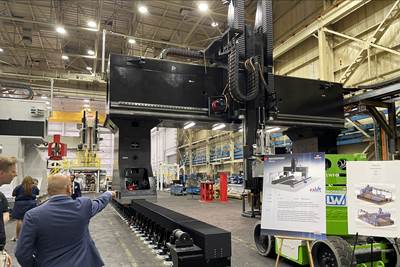Large 3D printed sections for a structure capable of serving as a multistory habitat on the moon illustrate various points about the promise and challenge of large-format 3D printing.
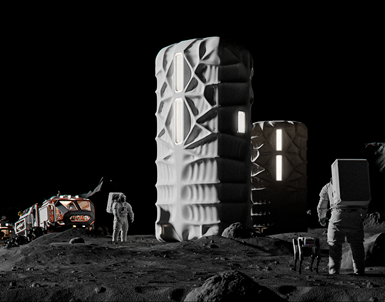
An artist's rendering. The habitat would be carried into space as living quarters for astronauts. It was designed to fit the cargo hold of the SpaceX Starship spacecraft. Image: Saga Space Architects.
The Rosenberg Space Habitat was developed by Saga Space Architects of Denmark in collaboration with the Institut auf dem Rosenberg of Switzerland. Six 3D printed sections, all about 23 feet long, comprise the outer form for the two-and-a-half-story structure. The material is glass-fiber-reinforced ABS with an additive for UV resistance. Ingersoll Machine Tools, maker of some of the very largest 3D printing systems, produced the parts on one of its own MasterPrint large-format polymer-extrusion additive manufacturing machines. Ingersoll lead process engineer Kris Czaja was part of this work, and in a recent conversation, he described some of the considerations. Here are a few of the noteworthy points about deposition-style polymer AM as it applied to these large parts:
1. 3D printing large structures lying down turns height into length for more capacity.
If a cylinder had been 3D printed from the ground up, about 9 feet is the maximum height the build could achieve with unsupported walls rising straight up from the machine table. (In fact, Ingersoll built a 9-foot-tall section just like this for a display in the Emerging Technology Center at the recent International Manufacturing Technology Show — it can be seen in the video above.) Printing long axial sections lying down on the table transformed height into length, and avoided capacity constraints imposed by gravity.

Ingersoll Machine Tools 3D printed the habitat's outer form in six axial sections, each with length equal to the habitat's full height. Printing the habitat on its side in this way essentially opened up greater capacity for the potential size of each part. This image is a still from a time-lapse footage of the 3D printing that can be seen within the video above.
2. Cooling time is a constraint when a 3D printed part is very large.

In addition to machine size and gravity, another potential constraint on the size of 3D printed polymer parts is cooling time. Ingersoll tuned the machine's motion control to allow for interpolation fast enough to deposit each layer within the timeframe allowed by the cooling and solidification of each previous layer. Photo: Saga Space Architects.
Printing sections 23 feet long produced very large parts presenting thermal challenges during 3D printing. For adhesion of one 3D printed layer to the next, each layer cannot be allowed to solidify too much prior to the next layer being placed atop it. Slicing the CAD geometry for a long part in a different way, so that 3D printing layers are oriented 45° to the table rather than parallel to it, is one approach the machine builder has used — but it was not an option with these parts. The solution instead involved Ingersoll adjusting servo parameters on the large machine to allow for sufficiently fast interpolation and traverse during deposition to apply each layer quickly enough to bond.
3. Large-format additive manufacturing is still finding its applications.

The space habitat's geometry was modeled to contain the atmospheric pressure within. The resulting shape called for 3D printing as the production method. The habitat is seen here where it is currently installed, at the Institut auf dem Rosenberg in Switzerland. Photo: Saga Space Architects.
Printing what is essentially a house (albeit for another world) may seem like an unusual application, but Czaja points out that large-format additive manufacturing is still at such an early stage that practically all the applications are strange. Manufacturing large tooling through large-format additive manufacturing was a noteworthy application not long ago — now it is an accepted application. The chance to easily produce very large structures in a single automated cycle is a possibility so new and so transformative that it is still finding its use cases. Printing homes and other buildings, including for use on earth, might be another application for large-scale additive manufacturing that we come to accept as part of the use and market for these machines.
Watch more about large-format additive manufacturing and 3D printing for space in episodes of The Cool Parts Show. Big polymer AM parts include underwater autonomous vehicle hull sections and the cockpit structure for a flight simulator. AM parts intended for space include this spacecraft engine combustion chamber as well as components of the Perseverance Mars rover.
Related Content
Hybrid Manufacturing Turns Design Inside Out
Hybrid systems combine traditional subtractive processes with additional processes, including laser metal deposition for additive manufacturing and friction stir welding, enabling manufacturers to design products from the inside-out.
Read MoreThe Cool Parts Show Is Coming to IMTS 2022
Find cool parts (and cool hosts) in these locations at the International Manufacturing Technology Show this September.
Read MoreUnderstanding HP's Metal Jet: Beyond Part Geometry, Now It's About Modularity, Automation and Scale
Since introducing its metal binder jetting platform at IMTS in 2018, HP has made significant strides to commercialize the technology as a serial production solution. We got an early preview of the just-announced Metal Jet S100.
Read MoreFast Wire EDM Machines Remove 3D-Printed Metal Parts From Large Build Plates
IMTS 2022: EDM Network’s mid-sized, four-axis Fast Wire EDM machine is said to provide three to four times faster cutting power.
Read MoreRead Next
Additive Manufacturing at IMTS 2022: In the AM Pavilion, and Beyond: AM Radio #26A
Applications and technology for additive manufacturing — not just 3D printing — were widespread across the International Manufacturing Technology Show. Listen to our live discussion recorded during the event for observations on AM at IMTS.
Read More3D Printed Prefab Homes, Made from Composite and UL-Certified
Mighty Buildings wants to change the construction industry with prefabricated houses 3D printed on demand from thermoset polymer composite. Two such buildings have already been installed.
Read MoreWorld’s Largest Metal 3D Printer Seen at Ingersoll Grand Opening Event
Maker of large additive and subtractive machines adds capacity in Rockford, Illinois.
Read More




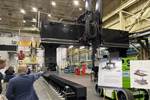



.png;maxWidth=300;quality=90)








